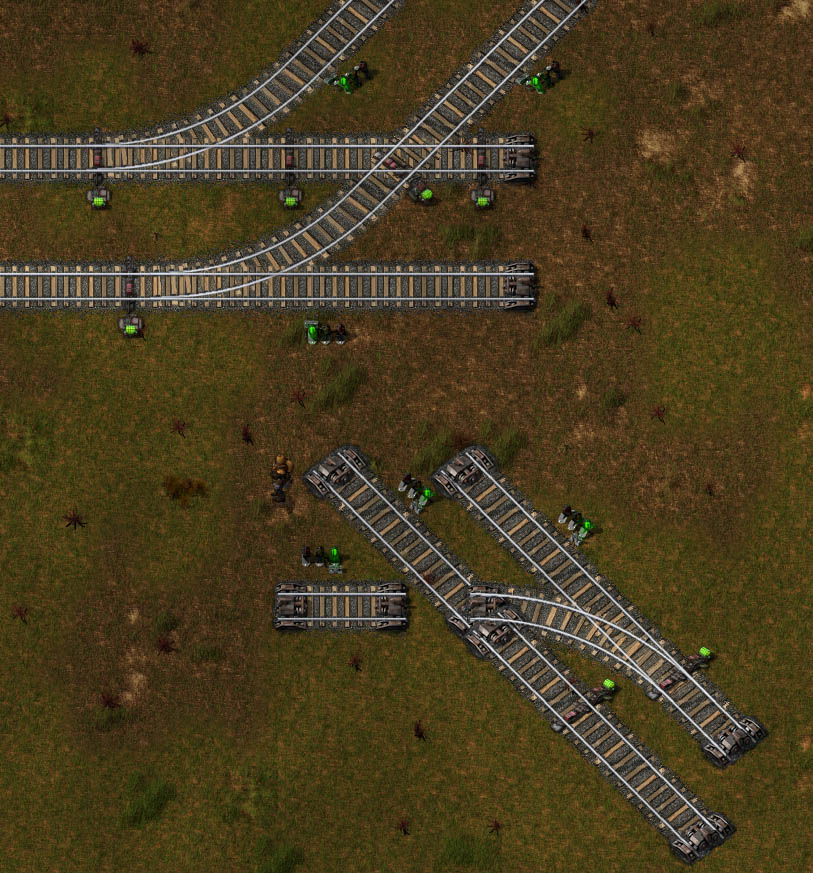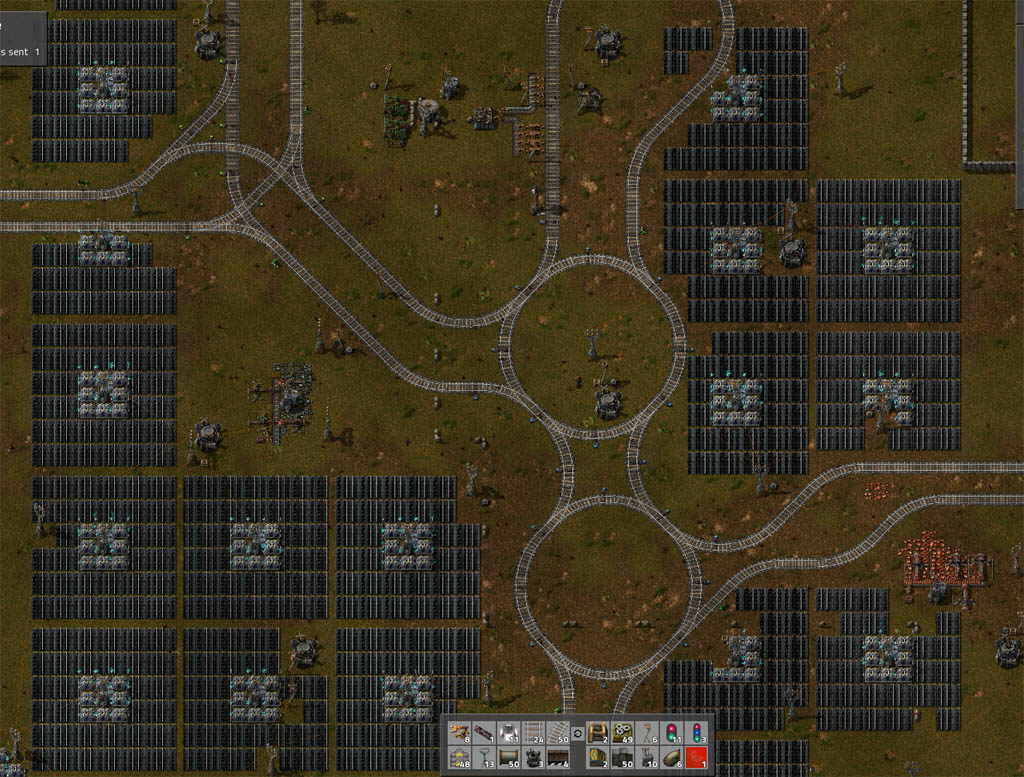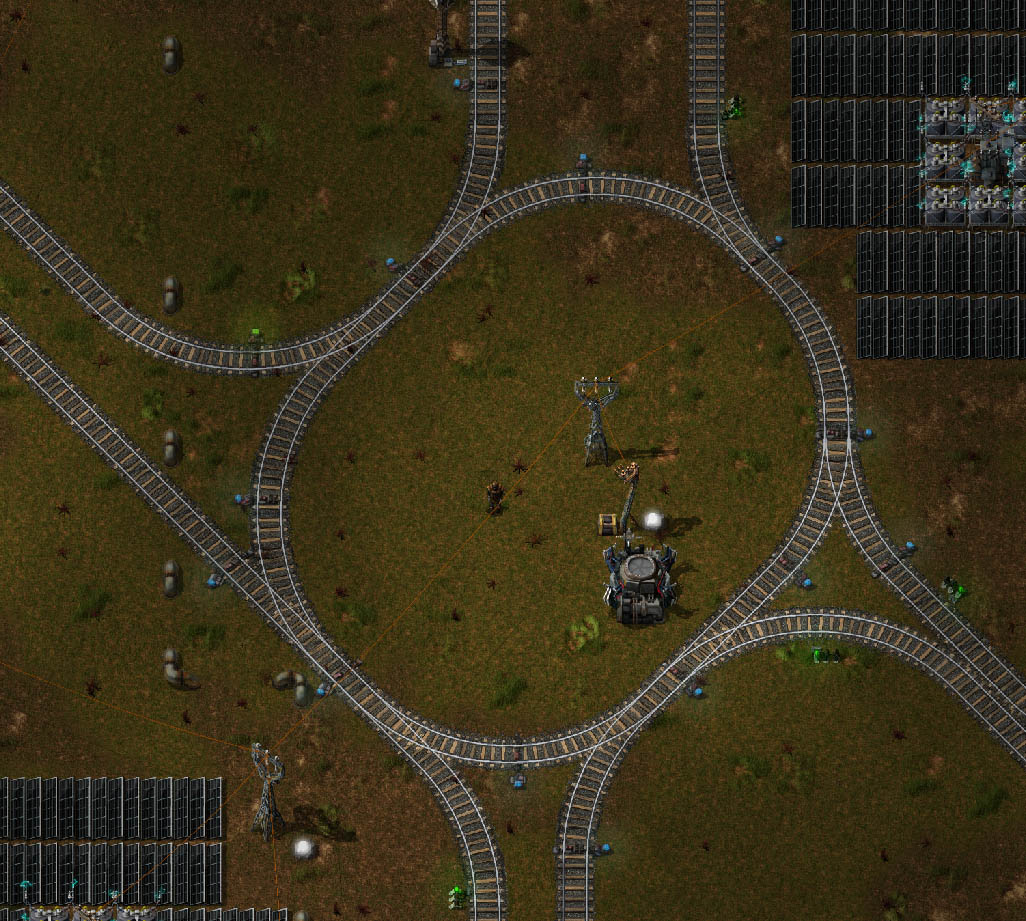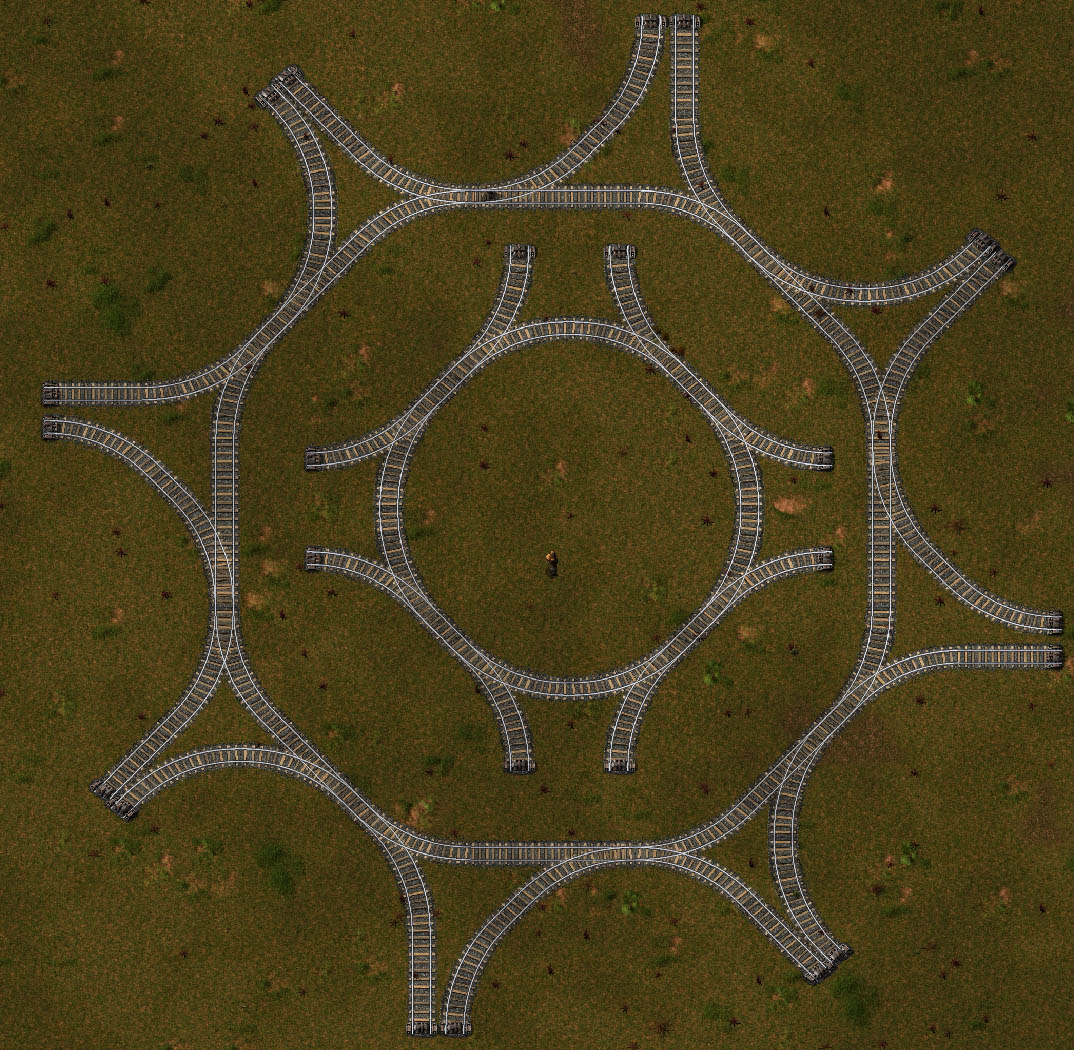The problem isn't the length of the internal blocks, the problem is that the rails are close enough that you can't signal some internal blocks at all, regardless of the intersection size. The only real solution is to space the rails farther apart, either in general, or just before the intersection. The problem with the latter is that it's impossible to shift rails just a little - an S-shape shift shifts the rail a full 5 tiles over.hitzu wrote:For that layout you can enlarge the whole intersection, making some internal blocks more than one train lenght
Earlier you said "at least a 4 tile gap is vital." It runs out you can place signals with a 2-tile gap, even though it looks like you can't. So a 2-tile gap isn't "way too close." But you can't place signals if there's no gap at all, which was true of one rail entering my intersection in my original screen shot. I've taken out one rail piece to make clearer that the end of a single curved rail is already intersecting the adjacent rail if there's no gap.

Also worth noting: in the first example, if I put a train stopped at that signal on the curved rail, and run another train into the intersection - they collide, causing damage. Not a problem with chain signals, but interesting anyway.







